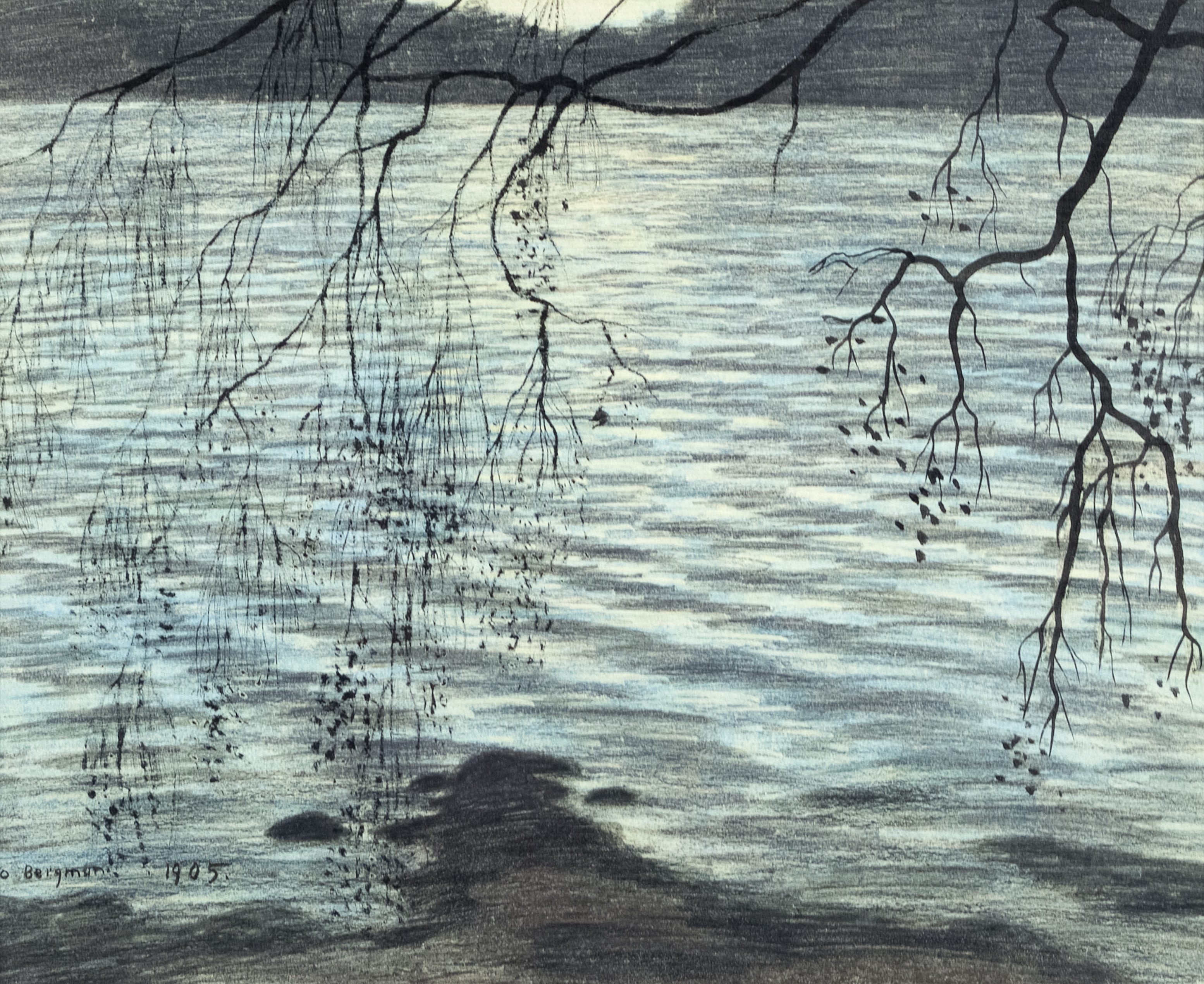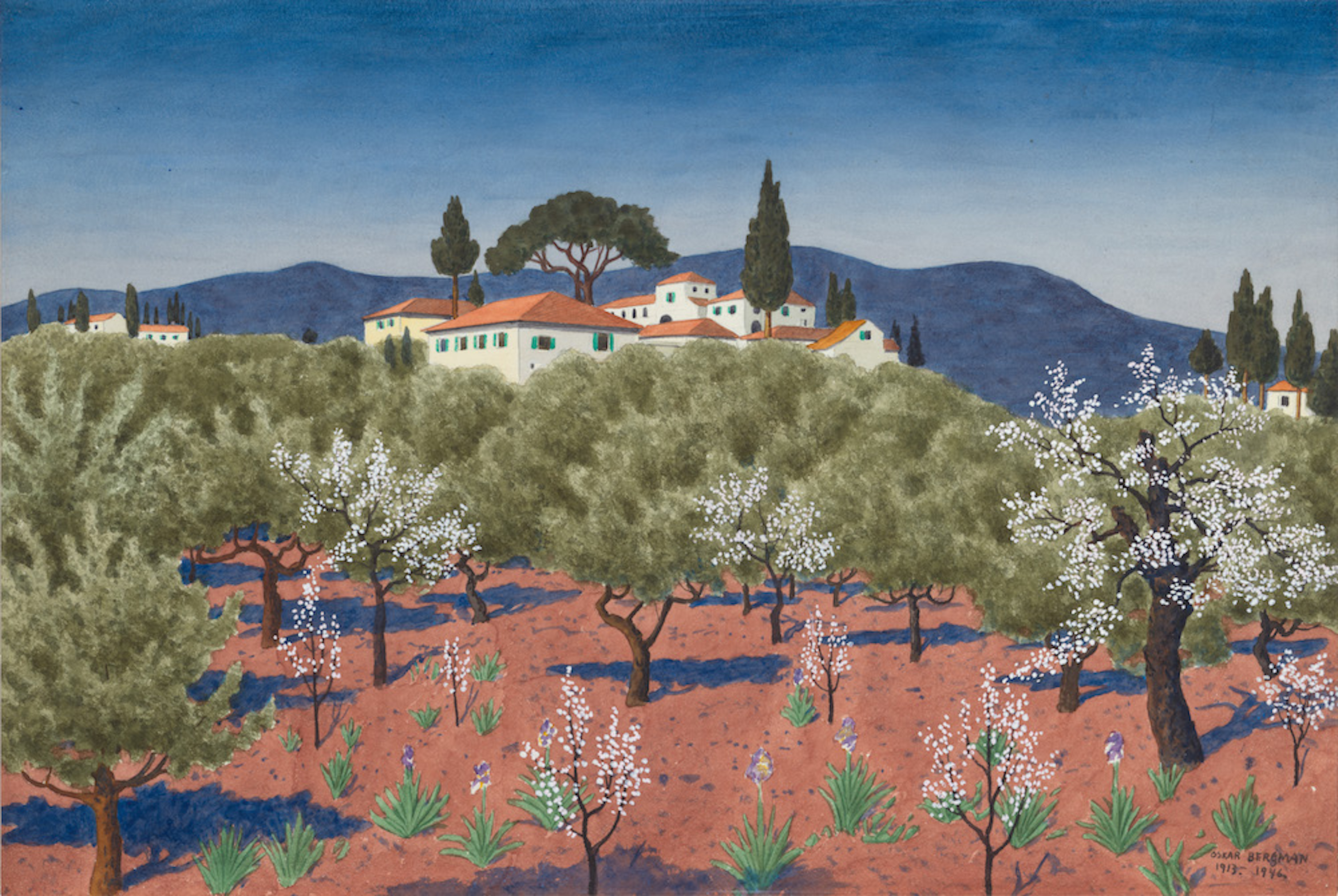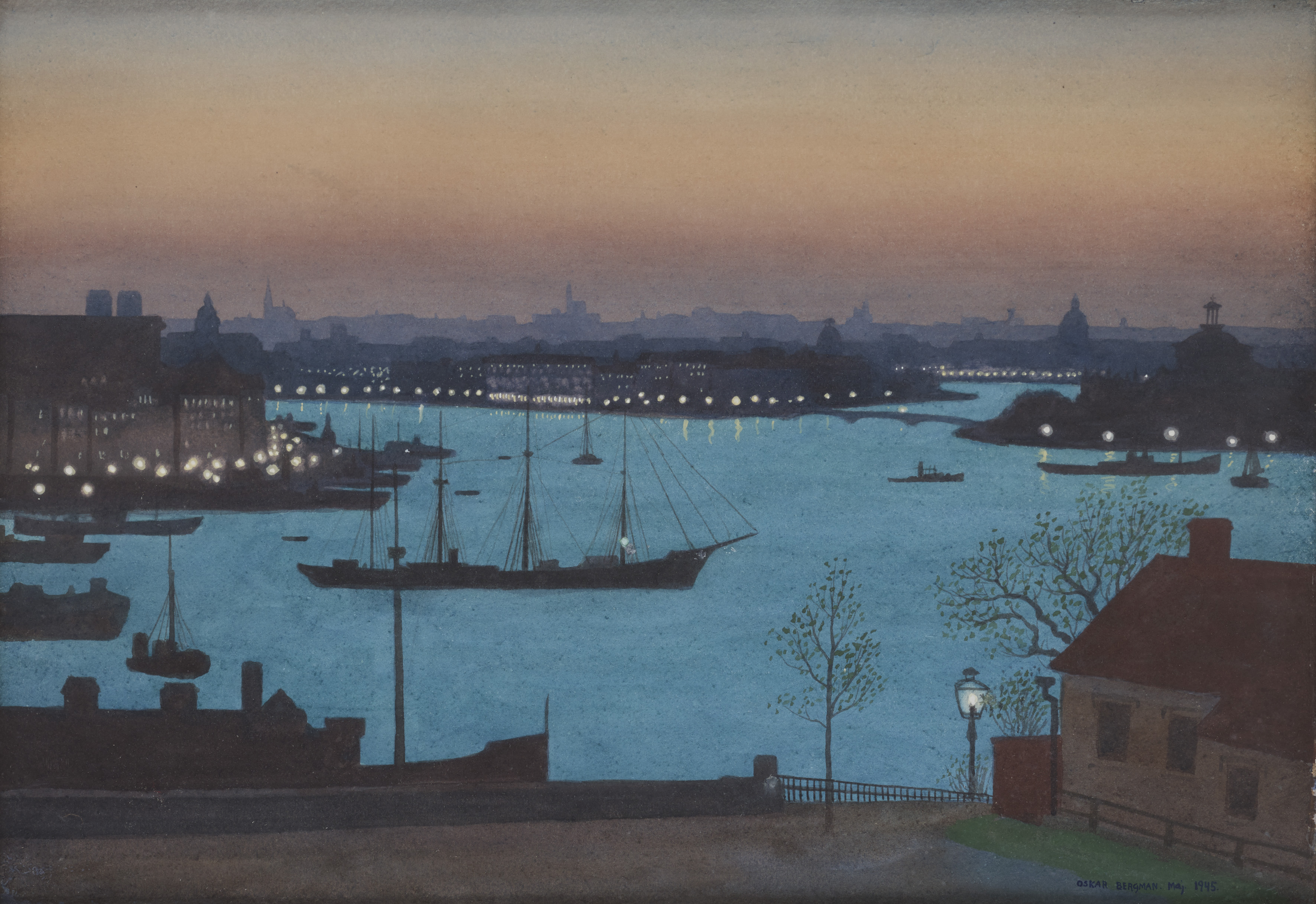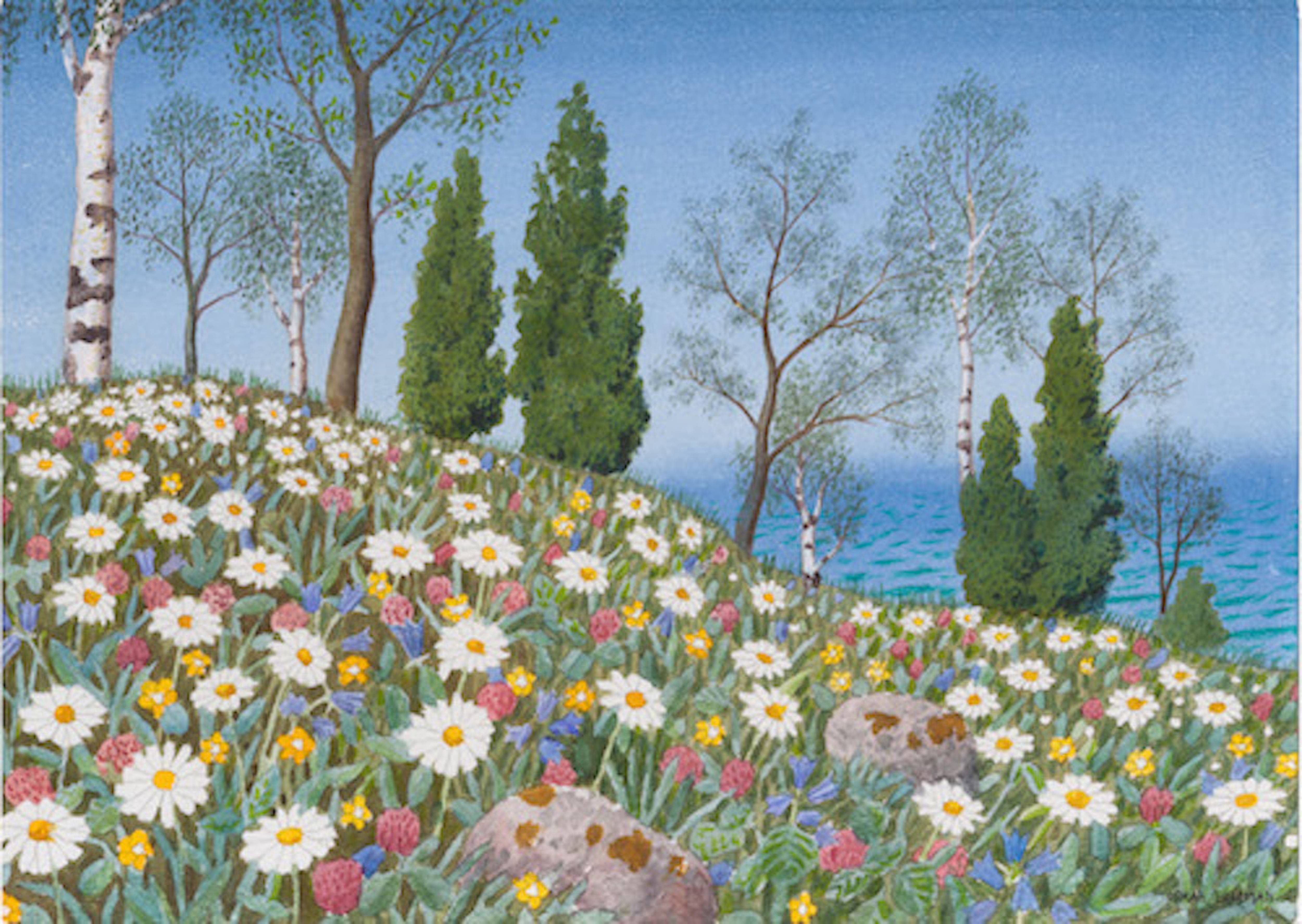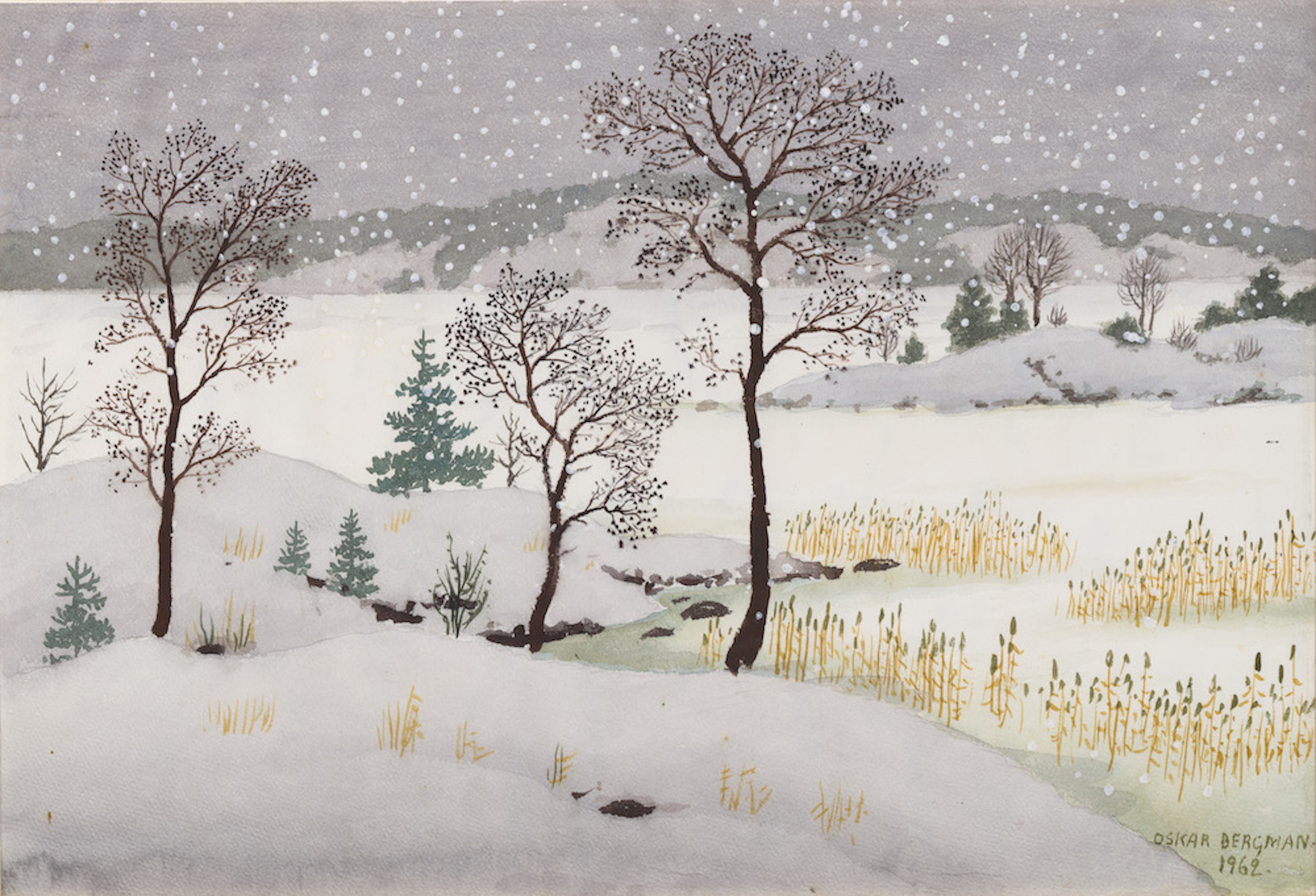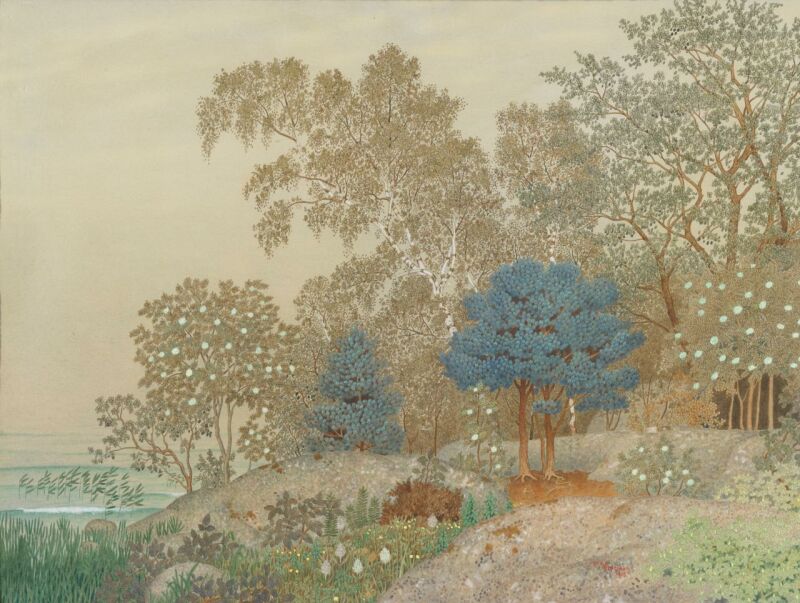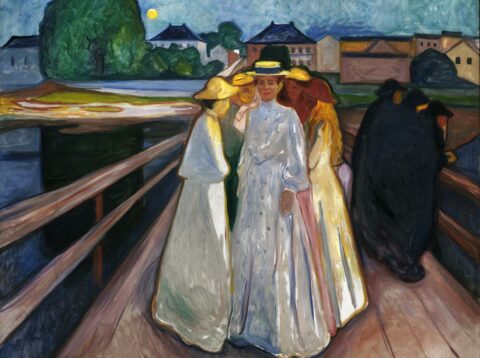Still Nature. Oskar Bergman
The painter Oskar Bergman (1879–1963) is intimately linked to the Thiel Gallery and Djurgården. With 43 works, he is one of the most well-represented artists in the Thiel collection. Signe Maria and Ernest Thiel were crucial to Bergman’s artistic career. In addition to purchasing his works, the Thiels offered him board and lodging in the Neglinge artist home in Saltsjöbaden, which they funded for a few years around 1900. Bergman became a close friend of his patrons, a friendship that continued even after Ernest Thiel had lost his fortune and was forced to sell his home and collection to the government. Bergman would visit Thiel on the island of Fjärdlång in the Stockholm archipelago to paint.
Djurgården’s pastoral settings were especially dear to the artist. He spent his summers there as a child, and this was where he began studying nature. The old oaks on Djurgården became a favourite subject of his..
Characteristic of Oskar Bergman’s oeuvre is the atmospheric and meticulously detailed urban and pastoral landscapes, with their vibrant colours and shimmering light. He used mainly watercolours but also oil, gouache and graphite. Alongside painting, Bergman was a printmaker and illustrator. People rarely feature in his motifs. Instead, he portrayed forests, solitary trees, roads, fields and water in different seasons, along with wildflowers, picturesque city scenes and the archipelago.
Oskar Bergman was born and mostly worked in Stockholm. He studied at Tekniska aftonskolan (now Konstfack) for four years and made several study tours around Europe. And yet, he is often referred to as an autodidact. Bergman’s paintings were sometimes considered rather singular by his contemporaries, since he stuck to his naturalist style despite the prevailing abstract and non-figurative ideals. But Bergman was not oblivious to the current tendencies. He was deeply inspired by Japanese woodcuts and symbolism, along with the early Renaissance, especially at the beginning of his career, around 1900. There were also contemporary influences – he admired Gustaf Fjaestad’s snowy landscapes and Axel Sjöberg’s paintings from the archipelago.
There is very little drama in Oskar Bergman’s paintings. Unlike the landscapes from the romantic period, he does not portray any wide panoramas or violent waterfalls. His interpretations of nature are composed and peaceful. Still nature in a small, richly-detailed format, sometimes almost photorealistic. And yet, the motifs feel like they come from an enchanted world. This magical mood may be caused by the way they oscillate between different states, and how the recurring themes are nevertheless undefinable.
Oskar Bergman’s lyrical landscapes and cityscapes from Sweden, southern Italy and France are widely popular and regularly turn up on the art market. But he is a comparatively unknown artist today. The Thiel Gallery now wishes to introduce Oskar Bergman to a new generation of visitors and give those who are already familiar with this artist the opportunity to rediscover his magical world in a major thematic presentation comprising some 150 works in various media.
Images
